Don’t Miss These Opportunities To View The Moon’s Biggest And Brightest Crater
We'll all have an opportunity to see Copernicus, known as the "Monarch of the Moon" during key phases. See the dates!
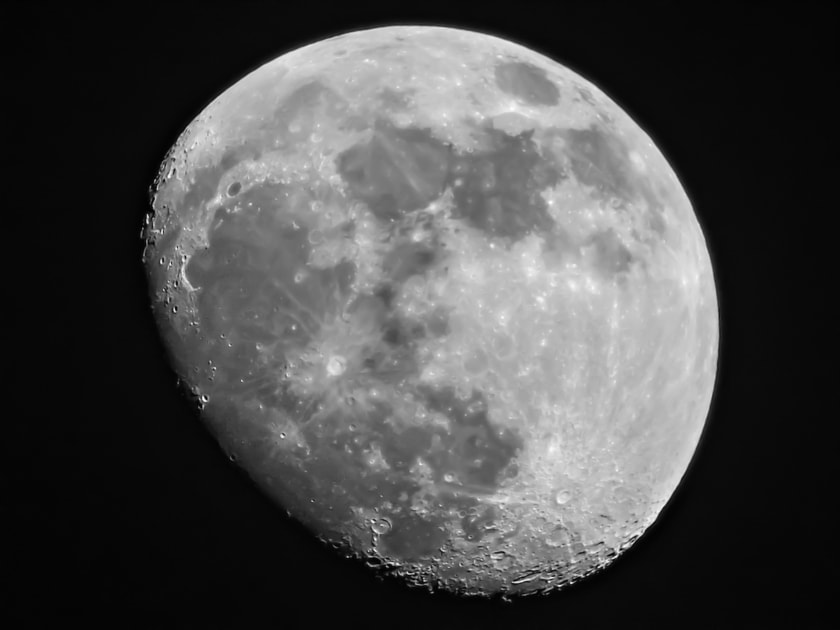
Without question, the most alluring celestial object in our sky is our nearest neighbor in space: the Moon. It provides us with endless fascination in all its phases, and its craggy surface is fodder for many Moon legends and lore.
On May 20, 2021, soon after sunset, look at the Moon along its terminator (the line where light meets dark) for a chance to glimpse its biggest and brightest crater, Copernicus, named after the famed 16th-century Polish astronomer and theologian Nicolaus Copernicus. This crater, which is about 58 miles wide and 2.3 miles deep, was nicknamed “Monarch of the Moon” by lunar cartographer Thomas Gwyn Elger.
The terminator is the best place to look for interesting lunar features because mountains cast the longest shadows in the rising/slanting sunlight. On March 22, Copernicus will be positioned directly along the terminator to make it the most obvious of any lunar feature.
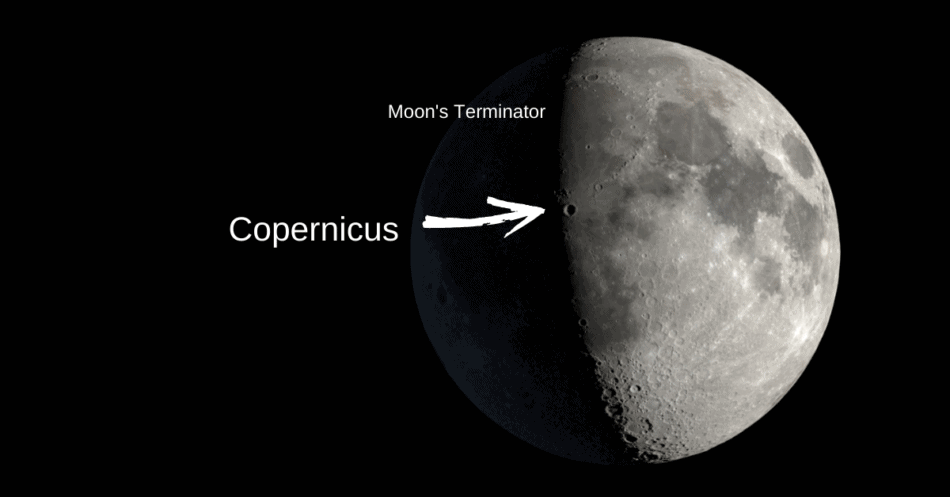
What Will You See?
On the 22nd, and on the nights that follow, you’ll be able to observe this crater, as full sunlight hits it, surrounded on all sides by a system of bright rays extending out for nearly 500 miles, resembling a nebulous pattern with feather-like markings.
Your first glance through binoculars will reveal large dark areas, the so-called seas or maria (the plural of mare) which, in reality, are flat lava plains. Earth’s natural satellite shows at least as much detail through binoculars as Galileo Galilei saw with his crude telescope more than 400 years ago. The mountains, hills, and plains that Galileo discovered in 1610 established for the very first time that the Moon is a world of its own, completely shattering the long-held notion that it was a perfect crystal sphere.
At sunrise, and again two weeks later at sunset, Copernicus forms a vast lake of black shadow. Those long shadows led early observers to believe that many lunar mountains are extremely steep. But they are not so spectacular if one actually works out the geometry of the projections—the Moon is only about one-quarter as large as Earth, so the lunar horizon falls away faster. As a result, an astronaut standing in the center of Copernicus, for example, would not be able to see its 12,600-foot–high walls from 29 miles away—they’re beyond the sight-line of the local horizon!
“Monarch of the Moon”
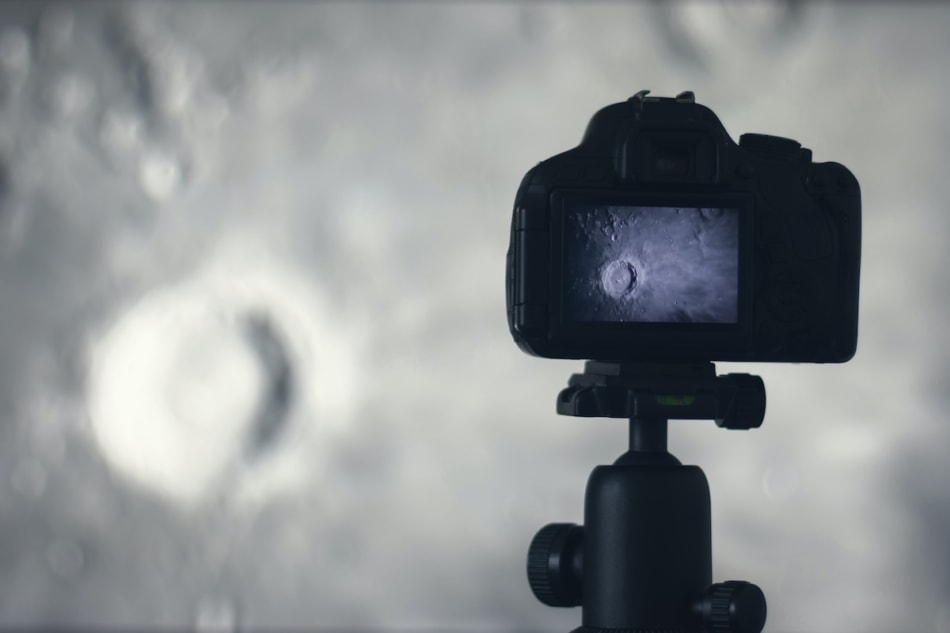
Copernicus is a classic example of a well-preserved, relatively young (less than 1 billion-year-old) lunar impact crater. Most likely due to its recent formation, the crater floor has not been flooded by lava. The terrain along the bottom is hilly in the southern half while the northern half is relatively smooth. Peaked mountains rise from the center of the crater to a height of 2,600 feet; they probably were formed as a result of a rebound of deep-seated rocks at the site of impact, scientists say.
When to See Copernicus
Below are the dates and times when Copernicus will be positioned along the terminator in 2021. Copernicus appears on the terminator twice each month, at the times of waxing gibbous and waning crescent phase. All you will need are a pair of binoculars or a small telescope; once you make a sighting, the crater will be immediately obvious. It takes a few hours for the terminator to fully pass across Copernicus, so you don’t need to look precisely at the time listed for a specific date in the table.
Keep in mind that a waxing gibbous Moon can also be seen in the eastern part of the sky during the late afternoon hours, though identifying lunar features is more difficult during the day as opposed to under the cover of night. On March 22nd, it will be about an hour before sundown for viewers in the East, but about four hours before sundown for viewers in the Pacific Time Zone.
Western viewers have better opportunities making a sighting during the Moon’s waning crescent phase. While Easterners will have to deal with making a sighting near or soon after daybreak, Westerners will have the advantage of a darker sky (though the moon will also be lower in the sky).
Times listed are for the Eastern Time Zone
| Date in 2021 | Moon Phase | Time |
| March 22 | Waxing Gibbous | 6:00 p.m |
| April 6 | Waning Crescent | 6:00 a.m. |
| May 20 | Waxing Gibbous | 5:00 p.m. |
| June 4 | Waning Crescent | 6:00 a.m. |
| July 18 | Waxing Gibbous | 3:00 p.m. |
| August 2 | Waning Crescent | 5:00 a.m. |
| September 15 | Waxing Gibbous | 3:00 p.m. |
| September 30 | Waning Crescent | 4:00 a.m. |
| November 13 | Waxing Gibbous | 6:00 p.m. |
| November 28 | Waning Crescent | 4:00 a.m. |
Copernicus Crater Made the “Photograph of the Century”
On November 24, 1966, NASA’s Lunar Orbiter 2 spacecraft was in the process of taking photographs of the Moon’s surface in order to determine possible landing sites for the upcoming Apollo missions.
Most of the probe’s photographs were taken of the lunar landscape with the camera pointing straight down, but on that particular date, with the spacecraft approaching Copernicus, the camera was pointing at an angle. The result was a stunningly detailed image termed by NASA scientist Martin Swetnick, and subsequently quoted by Time magazine, as “one of the great pictures of the century.”
That’s something to think about as you gaze at this famous crater through binoculars or a small telescope.

Joe Rao
Joe Rao is an esteemed astronomer who writes for Space.com, Sky & Telescope, and Natural History Magazine. Mr. Rao is a regular contributor to the Farmers' Almanac and serves as an associate lecturer for the Hayden Planetarium in New York City.



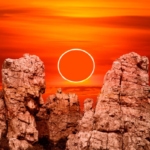
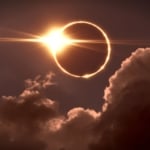
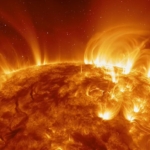
Lunar rainbows…who knew?